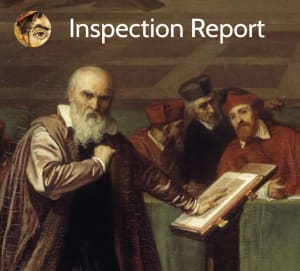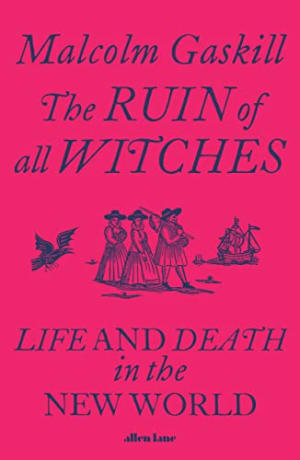For the first six years of his life, Alamayu lived in Maqdala. As Andrew Heavens tells us in The Prince and the Plunder: How Britain took one small boy and hundreds of treasures from Ethiopia, Maqdala was an Ethiopian mountain-top fortress-prison and stronghold of the King: Tewodros II. His mother, Tirunesh, was the King’s reluctant wife and daughter of his great rival - who lived in Maqdala as well. Alamayu’s grandfather was housed in the prison, along with two of Alamayu’s uncles on his mother’s side. Also held captive were a handful of British citizens whom Tewodros had detained up to 4 years ago. Complicated family politics aside, it must have been a secure, comfortable and sheltered existence.
Then, in 1868, Alamayu’s world imploded.
Armageddon
An irresistible British invasion force of 13,000 soldiers had marched 300 km inland from the Red Sea to rescue the incarcerated Brits. Just before their attack an enraged Tewodros had started killing his (non British) captives - the screams lasted for two hours as almost 200 prisoners were slaughtered.1
The British army then easily destroyed the Ethiopian forces, killing at least 700 hundred more in their mad death or glory charge down the mountainside. When the British force attacked Alamayu’s fortress itself, assaulting the gates and lobbing in artillery shells, his father, King Tewodros, shot himself in the head.
Alamayu and his mother witnessed the horde of victory crazed British soldiers charging over their compound, grabbing whatever looked valuable, and (very probably) assaulting the women who lived there. His mother was only saved from molestation by a senior British prisoner and an officer, who arrived just in time to set an armed guard on the room in which they were hiding.
A great mourning
In just two days his father’s empire had been emphatically destroyed, and Alamayu was surrounded by enemies - British and other Ethiopians opposed to Tewodros, as his own Grandfather had been.
With no obvious place to go, he and his mother Tirunesh were taken by the British army back with them to the coast. But his mother didn’t make it. She succumbed to an illness and died suddenly less than a month after her husband.
The seven year old Alamayu had lost his father and his mother, and he was about to lose his country too - bundled onto a waiting ship, he would never return to Ethiopia.
What’s in the book?
Andrew Heavens takes us through the traumatic events of Alamayu’s early childhood and subsequent life in Britain as a ward of the state, where he was placed into the care of Captain Speedy, a 2 metre tall eccentric ginger Scottish adventurer.
Alamayu never had the chance to write his own memoirs so almost all of the time we see Alamayu through other people’s eyes - whether they are British journalists, members of the public, or his classmates speaking on his behalf. All we have directly from Alamayu are a few scraps of writing and letters written for the moment.
One of those pairs of eyes staring out at Alamayu belonged to Queen Victoria, who he met three days after he arrived in England.
Little Alamayou is a very pretty, slight, graceful boy of 7 with beautiful eyes and a nice nose and mouth, though the lips are slightly thick. His skin is a dark bronze. His hair, which has been shaved, is crisp and curly. There is nothing of the negro about him. I kissed him which he returned. He can say one or two words in English.
Queen Victoria journal entry after meeting Alamayu, 1868
Victoria took a shine to him and did her best to make sure he was looked after right until the end of his life.
The first shall be last
Her reaction was fairly typical - even though she was sympathetic and friendly, she was also intensely interested in his physical differences to other white Europeans. She wanted to slot him into the racial hierarchy that dominated British thinking at that time: how far down the scale should he go?
Remarkably Alamayu seems to have remained even tempered and open hearted throughout his short life.
Lootany
After reccounting Alamayu’s life, Heavens then dedicates 50 pages to the items taken from Ethiopia at the time of the British expedition - a large collection of religiously and culturally significant objects that are locked away in museums around the UK. (You can see the full list of the things that were taken at Andrew Heaven's companion website to the book: https://www.theprinceandtheplunder.com/)
This may sound a bit dry but it is actually fascinating because it allows us to see how central this story of Tewodros and Alamayu is to modern Ethiopians and how much these artefacts mean to them - and how incidental they are to most people in Britain.2
There are also some great little sub-stories contained here, such as the immensely holy Tabots, and the discovery and return of one Tabot in particular which was found at the back of an Edinburgh church cupboard in 2002.
What is it like to read?
Heavens is a good storyteller and guides us with a sure pen through the events of 1868 and beyond. He sprinkles in first hand sources throughout the book so that people who met or knew Alamayu, like Queen Victoria, can speak to us directly.
It is also pretty short, with 200 pages covering Alamayu’s life (the Prince) and 50 pages covering the stuff taken away (the Plunder).
Downsides
For me the main weakness of the book is the central tragedy of the story: Alamayu didn’t live that long, dying aged 18. Most of the book therefore is his progress through schools and tuition, together with sporadic battles for custody. Not much happens and Alamayu is mostly a silent figure. Before he could really become an agent in his own life he died.
This also means that there is a lot of conjecture. For example we have a few photos of Alamayu including his class photo from Rugby School in 1876. Alamayu is mostly obscured by another child and we can just see his face peeking out. Heavens observes: “It is dangerous to over-interpret one moment caught in one photograph... But he seems timid, cowed and desperate to melt unnoticed in the background.” Then in next year’s class photo he is smiling broadly, and his tie looks a bit skew-whiff: “Has he resorted to playing the class clown? Has someone just leaned over and yanked his tie before the exposure?”.
The lack of material means that to some extent, there is space to see what you want - I often wasn’t quite as pessimistic as Heavens, but this may just reflect my own relentlessly sunny disposition.
Conclusion
If like me you didn’t know anything about Alamayu and the Maqdala treasures beyond some vague memories of a Flashman novel, this is a fascinating and eye opening account. It is also hugely relevant for today - particularly in Ethiopia, but also for many other countries that will have had similar dealings with Britain in the 19th Century.
Fundamentally though it is a human story, about a small child cast adrift - about his fall from the mountain-top, to become “one of us”, to know good and evil.
By good fortune, Alamayu’s uncles were not part of the massacre. His Grandfather is thought to have died in prison the year before in 1867. ↩︎
I can recommend comedian James Acaster for a 3 minute run-through of the arguments for and against repatriation on this youtube video. ↩︎
Book details
(back to top)- Title -
The Prince and the Plunder : How Britain took one small boy and hundreds of treasures from Ethiopia
- Author -
Andrew Heavens
- Publication date -
February 2023
- Publisher -
The History Press
- Pages -
272
- ISBN 13 -
978-0750997362
- Podcast episode -
- Amazon UK -
- Amazon US -



